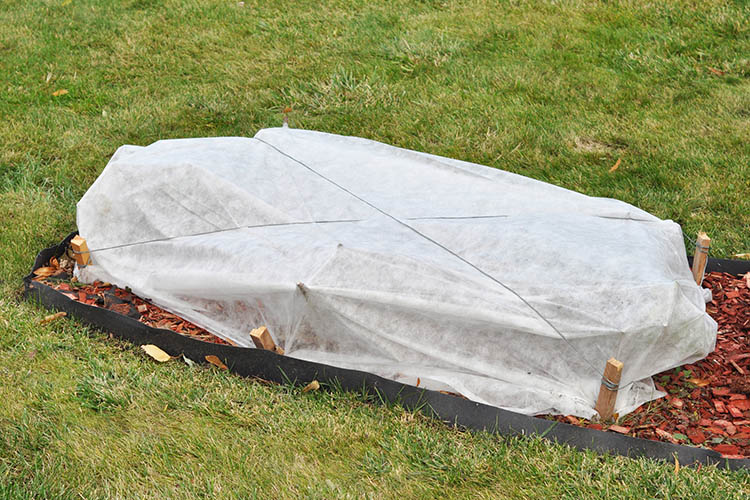Gardeners might want to protect tender plants tonight
Gardeners might want to protect tender plants tonight

LEXINGTON, Ky., (April 20, 2021) — In his poem "The Waste Land," T.S. Eliot dubbed April “the cruellest month,” and an approaching cold front may prove the truth in those words. The next few days will have lows in the 30s for much of the state.
“A strong cold front is going to push through the area today. After highs in the upper 60s to low 70s today, we drop down into the low to middle 30s tonight, a 30-degree-plus swing,” said Matt Dixon, senior meteorologist with the University of Kentucky College of Agriculture, Food and Environment.
The chilly pattern will stay around for the next few days, with highs on Wednesday in the mid-40s to mid-50s. Normal highs for this time of year across Kentucky are in the mid-60s to low 70s, and lows are usually in the mid- to upper 40s.
“It’s not out of the norm to see a freeze this late in the season,” Dixon said. “Luckily, we see a warming trend over the weekend and into next work week.”
The front brings the possibility of frost and freeze damage, though it’s early enough not to interfere with too much plant development, said Rick Durham, UK extension horticulture professor.
“If temperatures only dip into the 30s, I don’t think there is much reason for alarm,” he said. “We worry more about these types of temperatures in early to mid-May. We saw heavy frosts in Central Kentucky late last week; most plants should do OK.”
It’s a little early in the season to have planted summer vegetables or annuals, aside from cold tolerant varieties. He advises homeowners to cover delicate new plantings or small blooming shrubs overnight, if you want to protect flowers.
Plenty of plants such as cauliflower, asparagus, rhubarb and lettuces will survive unless temperatures plummet into the 20s, which forecasters do not expect.
Blueberries may be blooming and should be protected. Blackberries and raspberries bloom a little later and should escape damage. Strawberries will be susceptible, but they are easily covered and protected.
Cornflower, pansies, primrose, dianthus and violets are very hardy, and black-eyed Susan, coreopsis, snapdragons and sweet peas tolerate frost. These plants may look wilted after a hard frost or freeze but will usually recover with warming temperatures.
Commercial frost cloths are available that can protect some plants down to temperatures as low as 20 degrees F when used properly. Garden blankets, such as Reemay, are good row covers that can protect large groupings of tender spring flowers and vegetables.
Covers, however, don’t have to be elaborate or expensive to work. A row of stakes with newspaper, cardboard, or sheets and towels tented over them will do just fine. If gardeners don’t have stakes, they can lay the covers directly over plants and anchor them on the ground with rocks. This will prevent heat loss, though the plant may suffer minor damage where the covers touch them directly. Other materials that can be used as covers are blankets, drop cloths, an inverted flowerpot or bucket and milk jugs with the bottom cut out. Clear plastic materials are less useful, since radiant energy often passes through them.
“If you’re going to cover your plants before a hard frost, do so before dusk. Soil contains heat that is released at night as radiant energy. Draping a cloth or other fabric that can block radiant energy will hold this heat near the plants. If you wait until darkness falls, most of the stored heat in your garden will have dissipated,” Durham said. “No matter what type of cover you use, make sure it extends down to the soil on each side. Do not leave any openings for warmth to escape.”
If covering a tree or shrub, do not tie the covering to the trunk. It must drape to the ground to keep in the heat radiating from the soil. For this reason, it is very difficult to protect large trees and shrubs.
In the morning, remove the covers soon after the frost has thawed. Failing to do so causes a buildup of heat beneath the cover and could cause additional damage.
For more information about protecting plantings from frosts and freezes, check with the local office of the University of Kentucky Cooperative Extension Service.
Horticulture Weather


